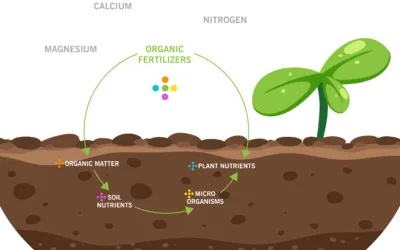Improving soil health is essential for promoting better plant growth, increasing crop yields, and ensuring overall environmental sustainability. Here are some effective ways to enhance soil health:
Organic Matter Addition: Incorporate organic matter into the soil, such as compost, manure, cover crops, and crop residues. Organic matter improves soil structure, water retention, and nutrient availability.
Crop Rotation: Rotate crops to break pest and disease cycles, prevent nutrient imbalances, and enhance soil structure. Different plants have varying nutrient requirements, and rotating crops help maintain a balanced soil ecosystem.
Cover Cropping: Plant cover crops during periods when the main crop is not growing. Cover crops protect the soil from erosion, suppress weeds, and contribute organic matter when they decompose.
No-Till or Reduced Tillage: Minimize soil disturbance by adopting no-till or reduced tillage practices. This helps preserve soil structure, reduce erosion, and enhance water retention.
Mulching: Apply organic or inorganic mulches to the soil surface to conserve moisture, suppress weeds, and regulate soil temperature. Mulching also contributes to organic matter content as it breaks down.
Balanced Fertilization: Use fertilizers based on soil nutrient testing to ensure that plants receive the necessary nutrients. Avoid overusing chemical fertilizers, as this can lead to nutrient imbalances and negatively impact soil health.
Companion Planting: Utilize companion planting to enhance nutrient cycling and pest management. Certain plant combinations can support each other’s growth and deter pests, promoting a healthier soil environment.
Biofertilizers and Soil Amendments: Incorporate biofertilizers (microorganisms like mycorrhizal fungi and nitrogen-fixing bacteria) and soil amendments to enhance nutrient availability and soil microbial activity.
Biostimulants: Certain biostimulants contain humic substances, such as fulvic acid and humic acid. These compounds contribute to soil health by enhancing nutrient availability, improving soil structure, and supporting microbial activity.
Water Management: Practice efficient water management to prevent soil erosion and waterlogging. Implement irrigation techniques that maintain optimal soil moisture levels for plant growth.
Soil Testing and Monitoring: Regularly test soil to assess its nutrient levels and pH. Monitoring soil health helps in making informed decisions about necessary amendments and adjustments.
Integrated Pest Management (IPM): Implement IPM strategies to manage pests without relying heavily on chemical pesticides. This helps maintain a balanced soil ecosystem.
Agroforestry and Windbreaks: Integrate trees and shrubs into agricultural landscapes to prevent wind and water erosion, provide shade, and contribute organic matter to the soil.
Remember that improving soil health is an ongoing process, and a combination of these practices is often more effective than relying on individual measures. Tailor your approach based on the specific characteristics and needs of your soil and crops.




Glad to see Dr Abi-Ghanem pushing this important work forward!